This Is Not a Car
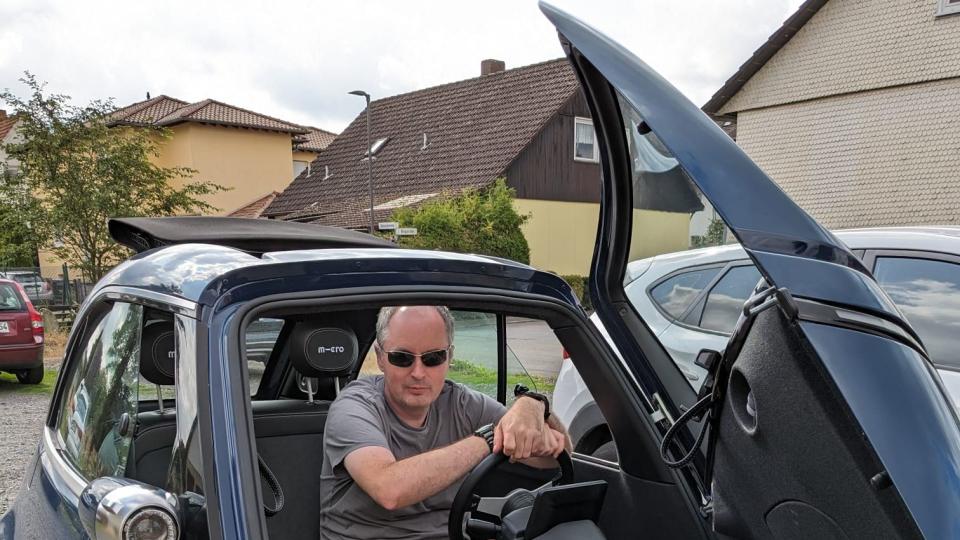
Before you laugh too hard—and that opportunity will come—please bear in mind that you are not looking at a car. The Micro Microlino has four wheels, lights, windows, and a wiper blade. But in its European homeland, this tiny retro EV is what is termed a quadricycle, a class of vehicle that sits between the motorcycle and the automobile. One that needs to satisfy much less demanding regulatory standards, especially on crash protection.
Thoughts about safety are never far away when driving the Microlino. It is tiny--slightly larger than the original 1950s Isetta ‘bubble car’ that inspired it—but still smaller than the original Smart ForTwo. Like its famous predecessor, its defining feature is a single side-hinged front door. One that means colliding with anything will limit escape options.

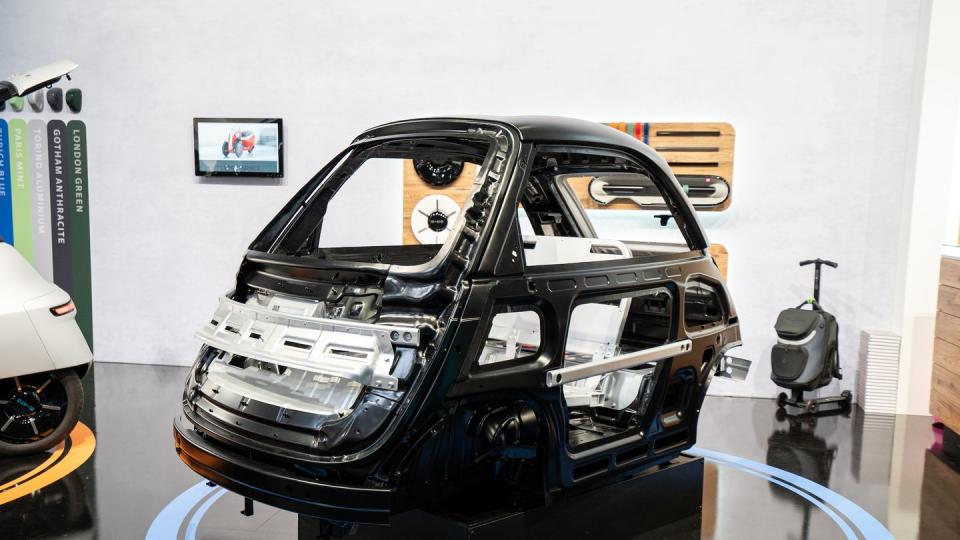
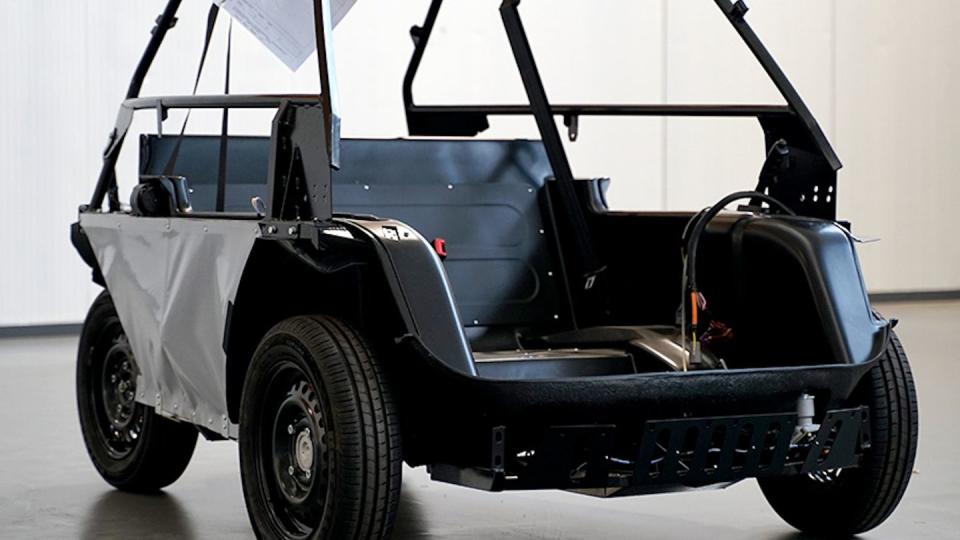
The Microlino is a product of Micro Mobility Systems, a Swiss company that started out making push scooters. It is built in Italy by Cecomp, the company that once made the Lancia Delta S4’s chassis, and it is already on sale in Switzerland, Italy, and Germany. I got the chance to experience it near Frankfurt during a testing session for the German Car of the Year awards, driving it on both urban streets and country roads. But there was no Autobahn: the Microlino is (rightly) prohibited from high-speed highways due to its inability to achieve high speeds.

Initial impressions are good. The Microlino is well assembled beyond some cheap areas like the exposed metal catches for the tiny rear tailgate. Unlike most quadricycles, the Microlino has a monocoque structure made from steel and aluminum. The front door is latched electrically and hinges from its left-hand side, opening at an upward angle. Getting in is awkward, with the need to step, crouched, into the car, and then turn around to sit down, shuffling sideways to the driving position.

With the driver installed a second occupant can enter, but Microlino pilots will need to be on good terms with anybody they share the narrow cockpit with, given the need to rummage for the seatbelt catches in the center of the bench seat. It is also important to remember to close the door before buckling up as the strap is otherwise out of reach. But there is no need to pull hard. Like a luxury sedan, the door incorporates a soft-close feature to motor it fully shut. Safety systems are conspicuous only in their absence, most obviously by the unusual sight in 2023 of a non-airbag steering wheel.
While the Microlino comes with three battery packs—6kWh, 10.5kWh, and 14kWh—but all use a single 25-horsepower rear motor. Our tester was one of the range-topping Pioneer Series, bringing the mid-sized cell pack with a full set of options including an optional fabric sunroof. Instrumentation is through a video screen mounted to the steering column, but there is also a touch-sensitive control panel for the heater (on or off), blower fan, and de-misters. Unlike most EVs the Microlino needs to be switched on using a key on the steering column; it also has a mechanical e-brake. Direction is selected by a rotary controller, and pushing this down engages the Sport mode (helpfully illustrated by an engraving of the Microlino with what seems to be Bullet Bill from Super Mario strapped to its roof.)
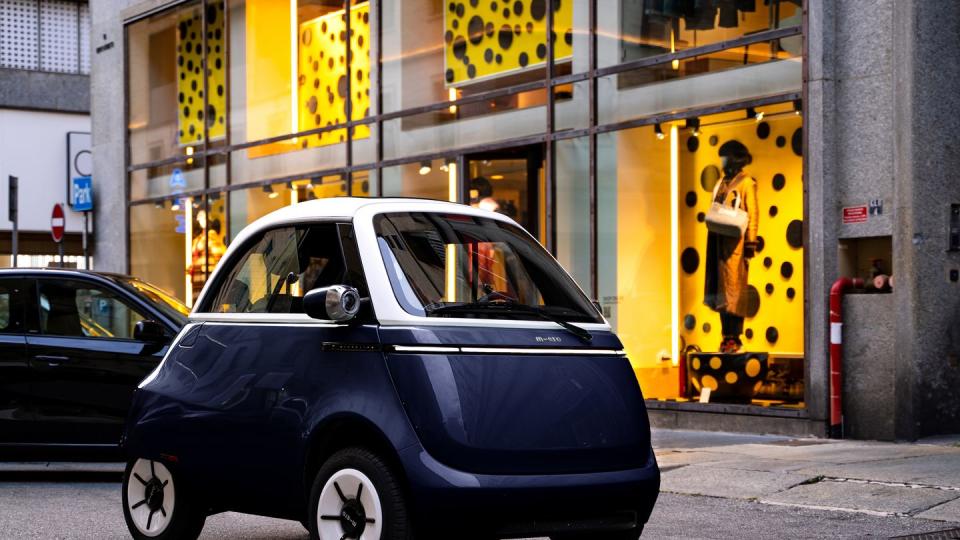
The Microlino is easy to drive, but far from quick. It sets off enthusiastically from rest when the accelerator is floored, but the rate of change soon slackens. The company claims a 5-second 0-30 mph time, which feels subjectively right, and which also acknowledges the inability to deliver a 0-60 mph time. Beyond 40 mph acceleration really tails off. It feels as if it is battling a slick of treacle, even in Sport mode. Reaching the 90-km/h (56 mph) limiter takes both time and patience, the last km/h increments arriving with seconds between them. At these speeds the Microlino loses what little composure it possesses; even at a gentle pace it is far from silent, but flat-out the plaintive whine of the electric motor is joined by abundant wind noise and road roar from the tiny tires.
Beyond confirming the existence of the limiter, my appetite for high-speed progress was limited. The Microlino’s ride is hard, the chassis crashing over even small bumps while also being deflected by them. Frequent correctional inputs are required. The unassisted steering is direct and delivers initially keen cornering responses but there is little sense of connection and attempting to push harder brings understeer. There is no stability or traction control, but even in a gravel parking lot, the Microlino lacked the power to spin its rear wheels, albeit with two sizable adult occupants on board. Unladen, the Microlino with the mid-spec battery weighs 1390 lbs per the company’s numbers.
At gentler speeds the Microlino is far happier. It is not narrow enough for true lane-splitting but can be threaded through much tighter gaps than full-sized cars in urban areas. It is also short enough to park sideways across a normal-sized spot, door to the pavement. Moving or stationary it seemed to be irresistible to onlookers, many starting conversations through the sunroof when stopped in traffic. This is a vehicle that spectators will enjoy as much as occupants—or maybe more.
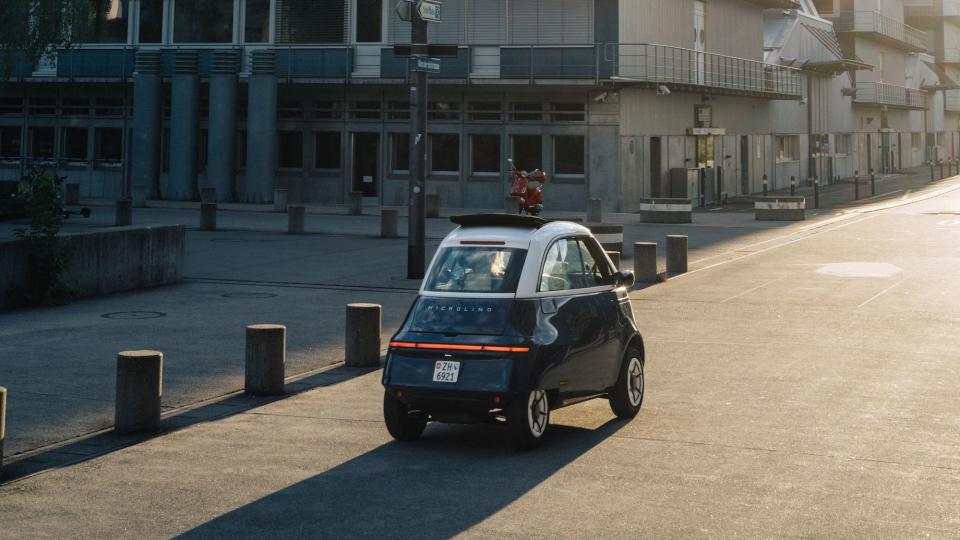
The Microlino is fun, but it is not a rational form of transport, being expensive for what it is. The cheapest version in Europe starts at €17,990--$19,300 at current exchange rates—and that’s with the tiny 6-kWh battery and a derisory 56-mile range under Europe’s generous testing methodology. For reference, the almost equally adorable (but slower) Citroen AMI costs less than half as much in Germany. The Microlino Pioneer Edition I drove costs €22,990—just over $24,600—and increases range to 109 miles. After a brief experience, that figure sounds like more of a threat than a promise; short journeys are what the Microlino is designed for.
Yet despite the price, there seems to be a market in Europe for those wanting to combine zero-emission urban mobility and retro chic. Micro says it has 30,000 reservations.
You Might Also Like

 Yahoo Autos
Yahoo Autos 